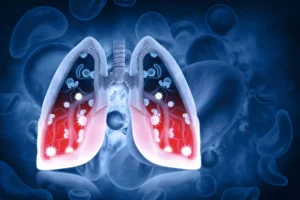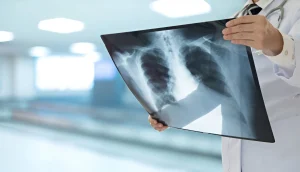Introduction
Candida species are a major cause of hospital-acquired fungal infections, leading to significant illness and death, especially in critically ill or immunocompromised patients. While mucocutaneous forms like oral thrush and vaginal candidiasis can affect healthy individuals, invasive infections such as candidaemia are more severe and harder to treat due to rising antifungal resistance and emerging pathogens like Candida auris. Taxonomic changes have added complexity to clinical diagnosis. Existing treatment guidelines lack coverage for new pathogens and therapies. This Review offers updated global recommendations for managing both invasive and mucocutaneous candidiasis, aiming to improve multidisciplinary care.
Guideline Development
The guideline was developed through global collaboration beginning in February 2020. Contributors worked across time zones via secure platforms, using PICO tables to evaluate evidence. After consensus and manuscript drafting, a public consultation was held in early 2024. Final revisions were made and approved by 73 scientific societies, with detailed methods and endorsements available in the appendix.
Epidemiology
Candida species are leading fungal pathogens, affecting both immunocompromised and otherwise healthy individuals. They cause a spectrum of diseases from superficial mucocutaneous infections to severe systemic infections like candidaemia. Invasive candidiasis affects over 1.5 million people annually, with Candida auris and drug-resistant strains posing serious risks. Vulvovaginal candidiasis affects 75% of women at least once, with high recurrence rates.
Infection Prevention and Control
Preventing Candida, especially Candida auris, requires a comprehensive approach: patient screening, isolation, and rigorous cleaning. High-risk individuals and close contacts should be screened using composite swabs and cultured on specialised media. Effective disinfectants include hydrogen peroxide and chlorine-based agents. Quaternary ammonium compounds are less effective and not recommended.
Diagnosis
Clinical Diagnosis
A thorough clinical history and physical examination are essential for diagnosing invasive and mucocutaneous candidiasis. In high-risk patients, such as those with neutropenia, imaging is recommended to rule out chronic disseminated candidiasis.
Conventional Diagnostic Methods
Blood and tissue cultures remain the gold standard despite limited sensitivity. Diagnostic yield improves with larger blood volumes and additional microscopy for tissue samples.
Molecular Techniques
Molecular methods are moderately recommended, especially commercial PCR assays, but are currently limited in scope. They are useful when rapid or species-specific identification is needed, particularly for resistant strains like C. auris.
Species Identification
Identifying Candida to species level is strongly recommended to guide treatment and surveillance. MALDI-TOF MS and sequencing are preferred, with chromogenic agars and biochemical methods used as alternatives where needed.
Direct Microscopy and Histopathology
Microscopy and special stains help confirm tissue invasion, but not species. Histopathology should be supported by culture or molecular methods to confirm diagnosis.
Biomarkers and Serology
BDG and mannan/anti-mannan tests are moderately recommended, but should be used alongside clinical findings and other diagnostics. Biomarkers alone should not guide treatment decisions.
Susceptibility Testing
Antifungal susceptibility testing using EUCAST or CLSI methods is strongly recommended for all invasive cases and treatment failures. Commercial tests can be used if validated. CDC breakpoints are used for C. auris.
Further Diagnostic Evaluations
Additional diagnostic guidance for Candida endocarditis, CNS, ocular, and chronic disseminated infections is available. Figure 1 provides a visual overview of these diagnostic approaches, integrating clinical, laboratory, and imaging steps to aid decision-making.

Figure 1. Optimal diagnostic pathway for the diagnosis of candidaemia and invasive candidiasis in adults
Treatment
Infection Specialist Consultation
Infectious diseases or microbiology consultation is strongly recommended for all cases of candidaemia or invasive candidiasis. Antifungal stewardship teams can support guideline adherence when specialists are unavailable.
Antifungal Stewardship
Antifungal stewardship should be integrated into broader antimicrobial programmes. The establishment of expert centres for clinical support is also encouraged.
Prophylaxis in Abdominal Surgery
Fluconazole prophylaxis is moderately recommended after abdominal surgeries with GI perforation. Echinocandins may be considered if azole resistance is a concern.
Prophylaxis in Neutropenia
Posaconazole or other mould-active drugs are recommended for patients with long-term neutropenia due to AML or MDS, given the increased risk of resistant and mould infections.
Prophylaxis in Allogeneic HSCT
Fluconazole is strongly recommended for adults undergoing allogeneic HSCT, providing both early and long-term survival benefits. Broader-spectrum antifungals may reduce mould infections but haven’t shown a survival benefit.
Prophylaxis in Other Patient Groups
Guidance for antifungal prophylaxis in other transplant types (e.g. liver, lung, kidney) is detailed in the appendix. Recommendations vary based on risk profiles.
Fever-Driven Treatment
Routine fever-driven antifungal therapy is not supported. Empirical treatment is moderately recommended only for high-risk patients with signs of sepsis and known risk factors for candidaemia.
Diagnostic/Biomarker-Driven Treatment
Current data do not support using biomarkers or molecular tests to start pre-emptive treatment. BDG may help guide stopping empirical antifungals.
First-Line Treatment of Candidaemia
Echinocandins (including rezafungin) are strongly recommended as first-line therapy for candidaemia due to their safety and broad-spectrum activity. Alternatives like liposomal amphotericin B or fluconazole are moderately recommended if resistance or unavailability exists. Figure 2 illustrates the optimal treatment pathway for candidaemia
For candidaemia without deep-seated infection, treatment should continue for 14 days after the first of three consecutive negative blood cultures. Daily blood cultures are needed to confirm clearance. More research is required to refine timing, duration, and screening for complications.

Figure 2. Optimal treatment pathway for candidaemia without organ involvement in adults when all treatment modalities and antifungal drugs are available
Switch to oral treatment
Switching to oral azoles (fluconazole or voriconazole) is moderately recommended after ≥5 days of echinocandin therapy if the patient is stable, Candida is cleared, the patient is non-neutropenic, source control is done, oral therapy is tolerated, and azole susceptibility is confirmed. (Appendix pp 102–103)
Second-line or salvage treatment of candidaemia
Liposomal amphotericin B (LAmB) is strongly recommended when echinocandins can’t be used due to resistance, failure, or intolerance. Switch to oral fluconazole early if possible. Fluconazole is only marginally recommended initially due to rising resistance. Voriconazole is moderately recommended but requires caution. Local species and resistance patterns should guide choices. (Appendix pp 103–104)
CNS infection
LAmB plus flucytosine is strongly recommended for CNS candidiasis. Amphotericin deoxycholate is a moderate alternative if LAmB isn’t available. Fluconazole (± flucytosine) is recommended as oral step-down therapy if the strain is susceptible. Treat until clinical, CSF, and imaging signs resolve. Remove infected CNS implants when present. See figure 3 for the optimal therapeutic approach.

Figure 3. Optimal treatment pathway for CNS candidiasis in adults when all treatment modalities and antifungal drugs are available
Management of invasive candidiasis requires infection site–specific and patient-adapted treatment strategies. For ocular involvement, oral azoles like fluconazole or voriconazole are preferred for susceptible strains, while LAmB is used for resistant cases; echinocandins are not recommended for endophthalmitis. Endocarditis treatment involves LAmB or an echinocandin, followed by step-down to oral fluconazole when possible, combined with surgical intervention. Other invasive forms—such as peritonitis, osteoarticular infections, and Candida pneumonia—also require tailored systemic therapy and appropriate source control. For mucocutaneous infections (oral, oesophageal, vulvovaginal), treatment is determined by disease severity. Therapeutic drug monitoring (TDM) is advised for optimizing efficacy and safety of antifungals, particularly triazoles and echinocandins, with a target echinocandin Cmin >1 mg/L.
In neonates and children, age-specific dosing and formulation considerations are essential, with treatment guided by developmental pharmacokinetics and disease burden. For uncomplicated candidaemia without metastatic complications, antifungal therapy should continue for 14 days after the first of three consecutive negative blood cultures, confirmed with daily monitoring.
Conclusion
These comprehensive guidelines offer evidence-based recommendations for treating invasive candidiasis across various clinical scenarios. They emphasize individualized care, timely source control, appropriate drug selection, and the importance of local resistance patterns—while also identifying areas where more research is needed to strengthen global antifungal stewardship.
Source: Global guideline for the diagnosis and management of candidiasis: an initiative of the ECMM in cooperation with ISHAM and ASM Cornely, Oliver A et al. The Lancet Infectious Diseases, Volume 25, Issue 5, e280 – e293




